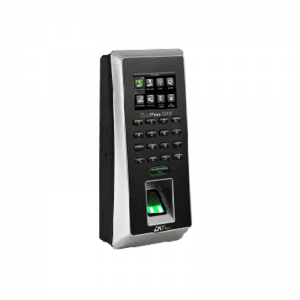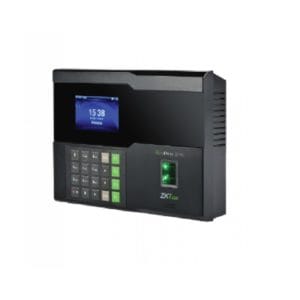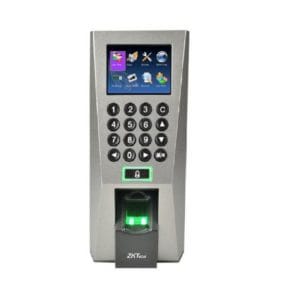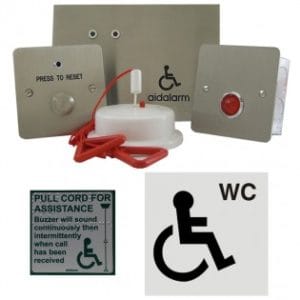How Attendance Can Be More Accountable With Fingerprint Scanners

I’m sure you have heard of Fingerprint Scanner For Attendance before. But have you ever wondered what the best way to use a fingerprint scanner is? From working in a school setting, I can tell you that many people have discussed this topic over the years. Some say you can use your fingerprints to enter your classroom without keying in your badge number each time. The ability for your employees to access their work computer remotely is a great thing, especially when it comes to attendance. The problem is that traditional hardware fingerprint scanners aren’t all that secure. That’s why there are alternatives available, and one of them has just been released by Apple. But what is the best way to use fingerprint scanners and attendance?
How does a Fingerprint Scanner Work?
A fingerprint scanner is a device that can read fingerprints. The device may be mounted into a door or built into a keypad and activated by fingerprint recognition. The user’s fingerprints are scanned to verify the identity of the person attempting to use the device. The process of registering a user’s fingerprint is called activation, and it consists of identifying whether or not it matches any stored biometric data. If a match is found, it confirms that the user is allowed access to the biometric system (or level); if not, access is denied.
What Advantages do Fingerprint Scanners for Attendance have?
Fingerprint scanners are becoming increasingly popular for attendance tracking in corporate and educational sectors. There are several benefits to using a fingerprint scanner for attendance, including:
- Increased accuracy – With a fingerprint scanner, there is no longer any need to worry about misprints or illegible handwriting. Each person’s fingerprint is unique, so there is no chance of mix-ups or errors.
- Time savings – Once set up, a fingerprint scanner can save you a lot of time when taking attendance. There is no need to check names off a list or take roll calls individually; scan each person’s finger as they arrive, and the system will do the rest.
- Convenience – A fingerprint scanner can be used anywhere, at any time. This makes it much more convenient than traditional attendance tracking methods, which can often be cumbersome and time-consuming.
- Cost savings – In addition to saving you time, a fingerprint scanner can also save you money in the long run. With no need to purchase paper rolls or name tags, you’ll be able to reduce your overall expenses associated with attendance tracking.
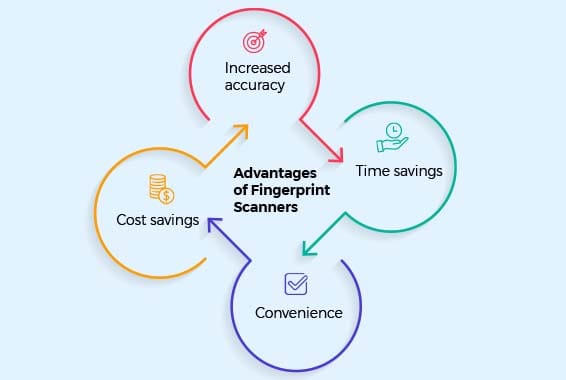 What are the Different Fingerprint Scanners?
What are the Different Fingerprint Scanners?
- ZKTeco ZK VF300 Face Recognition:
This one is the newest facial recognition design and uses cutting-edge technology.
- FingerTec AC900 Standard Fingerprint:
It is a time attendance machine for controlling access and keeping track of time. Further, it always does its job as a security system.
- Fingertec AC100C Fingerprint Time & Attendance System:
It can store up to 200,000 transactions and up to 12,000 templates. So, it means it is suitable for offices, stores, and f
- Matrix COSEC COMBO FOT20 Fingerprint-Based Time-Attendance:
Currently, it is used to meet the needs of a time control system with strict follow-up. So, visit our page or contact us for more product details related to the biometric attendance machine in UAE.
What are the Features of Fingerprint Scanners?
The following are the features of the fingerprint scanner for attendance:
- It can record attendance directly from a finger because it is safe and secure.
- And it allows you to use your fingerprint as an identification card and can also be used in other applications.
- It contains a special algorithm that scans your fingerprints to save them on a server or card and ensures that you cannot use the same finger again, even if it is cleaned with soap or water.
- The fingerprint scanner does not require special training because it just works when you press it with your finger, so no special skills needed from the user’s side.
How do I Set Up my Fingerprint Scanner Correctly?
There are a few steps you need to take to set up your fingerprint scanner correctly for attendance:
- Ensure the scanner is properly plugs in and powered on.
- You’ll need to enroll your fingerprints into the system. This usually involves placing your finger on the scanner several times so that it can capture a clear image.
- Once your fingerprints are fully enroll, you’ll need to set up the attendance software to recognize the scanner. This usually involves configuring the software to communicate with the scanner using a specific protocol (like USB or Ethernet).
- Finally, you’ll need to test everything to ensure it’s working properly. Place your finger on the scanner and ensure it correctly registers your attendance.
Is the Cost of a Fingerprint Scanner Worth it?
A fingerprint scanner may seem high initially, but it’s well worth the price. If you’re buying a new phone, this is an essential part of that purchase.
Fingerprint scanners are an essential security measure for smartphones. They allow you to unlock your phone with a simple touch of your finger and help prevent others from accessing it without your permission.
Avoid breaking your finger when removing your phone from your pocket or bag. Then consider getting a case that protects against sharp objects like nails or keys (which can damage the sensor) or keeps it away from dust and dirt (which can lodge between the sensor and the glass).
What are the Disadvantages of using a Fingerprint Scanner for Attendance?
There are several disadvantages to using a fingerprint scanner for attendance:
- If the fingerprint scanner is not working properly, it can cause problems with attendance tracking.
- And if someone’s finger injured or dirty, it can prevent the fingerprint scanner from working properly.
- If someone needs a good-quality fingerprint scan, it can again cause problems with attendance tracking.
- Using a fingerprint scanner for attendance can be more expensive than other methods, such as barcodes or RFID tags.
Conclusion
As you can see, there are a few different ways to use a fingerprint scanner for attendance. Each has its pros and cons, so weighing those carefully before deciding which option is best for your organization is important. In general, fingerprint scanners offer a quick, easy way to take attendance without needing paper sign-in sheets or physical keys.








